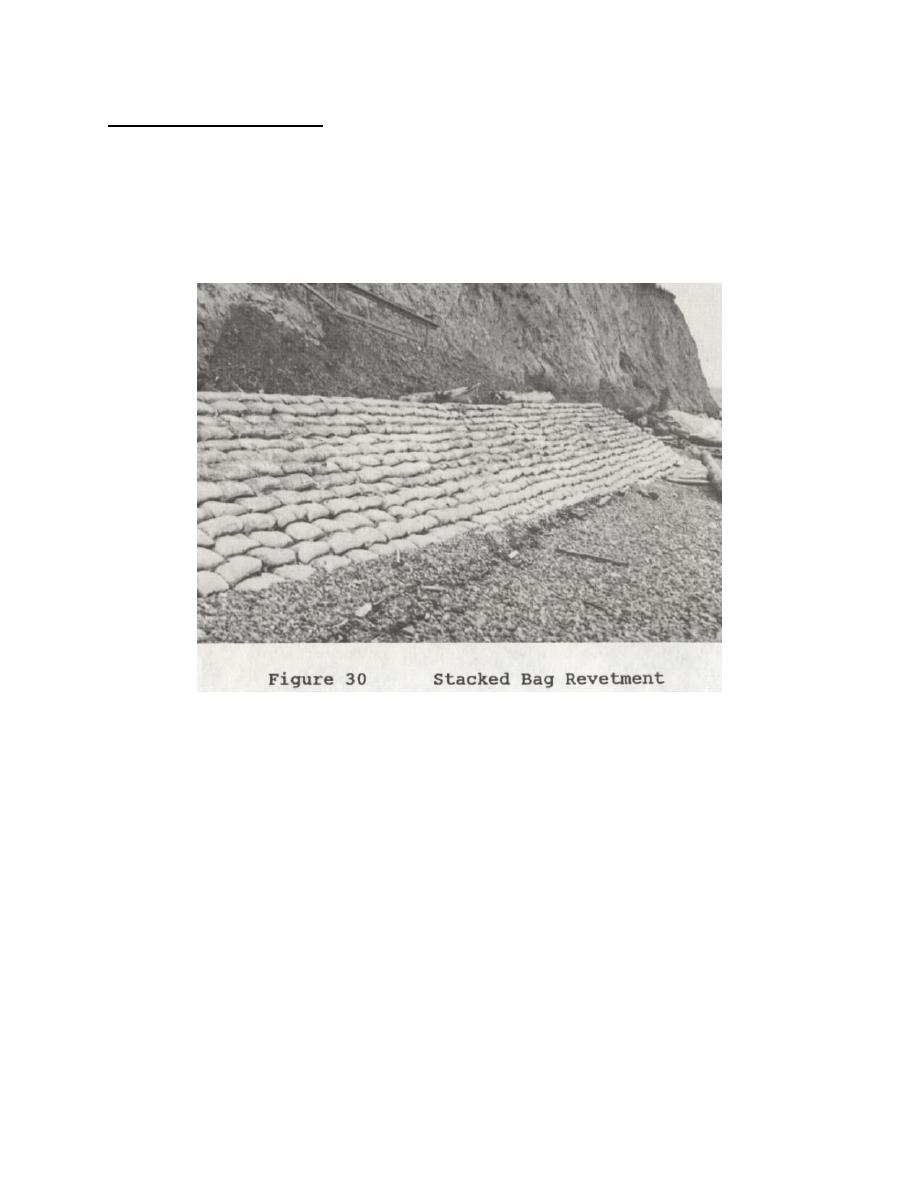
Stacked Bag or Mat Revetments
Several manufacturers produce bags and mats, in various sizes and fabrics that are commonly
filled with either sand or lean concrete for use in revetments. While no special equipment is required to
fill bags with sand, a mixer and possibly a pump are needed for concrete-filled units. Bags should be
filled and stacked against a prepared slope with their long axes parallel to the shoreline and joints offset
as in brick work (Figure 30). Grout-filled bags can be further stabilized with steel rods driven down
through the bags.
The advantage of a bag revetment is its moderate cost. Sand filled bags are relatively flexible
and can be repaired if some are dislodged. They are particularly suited to temporary emergency
protection measures. Among their disadvantages are limitation to low energy areas, a relatively short
service life compared to other revetments, and their generally unattractive appearance. Since concrete-
filled structures are rigid, any movement or distortion from differential settlement of the subgrade can
cause a major failure that would be hard to repair. Sand-filled bags are highly susceptible to damage and
possible failure from vandalism, impact by water-borne debris, and deterioration of material and seams
by sunlight. The smooth, rounded contours of bags also present an interlocking problem and they should
be kept flatter and underfilled for stability.
Bags should form a large mass of pillow-like concrete sections with regularly spaced filter
meshes for the passage of water.
39



 Previous Page
Previous Page
